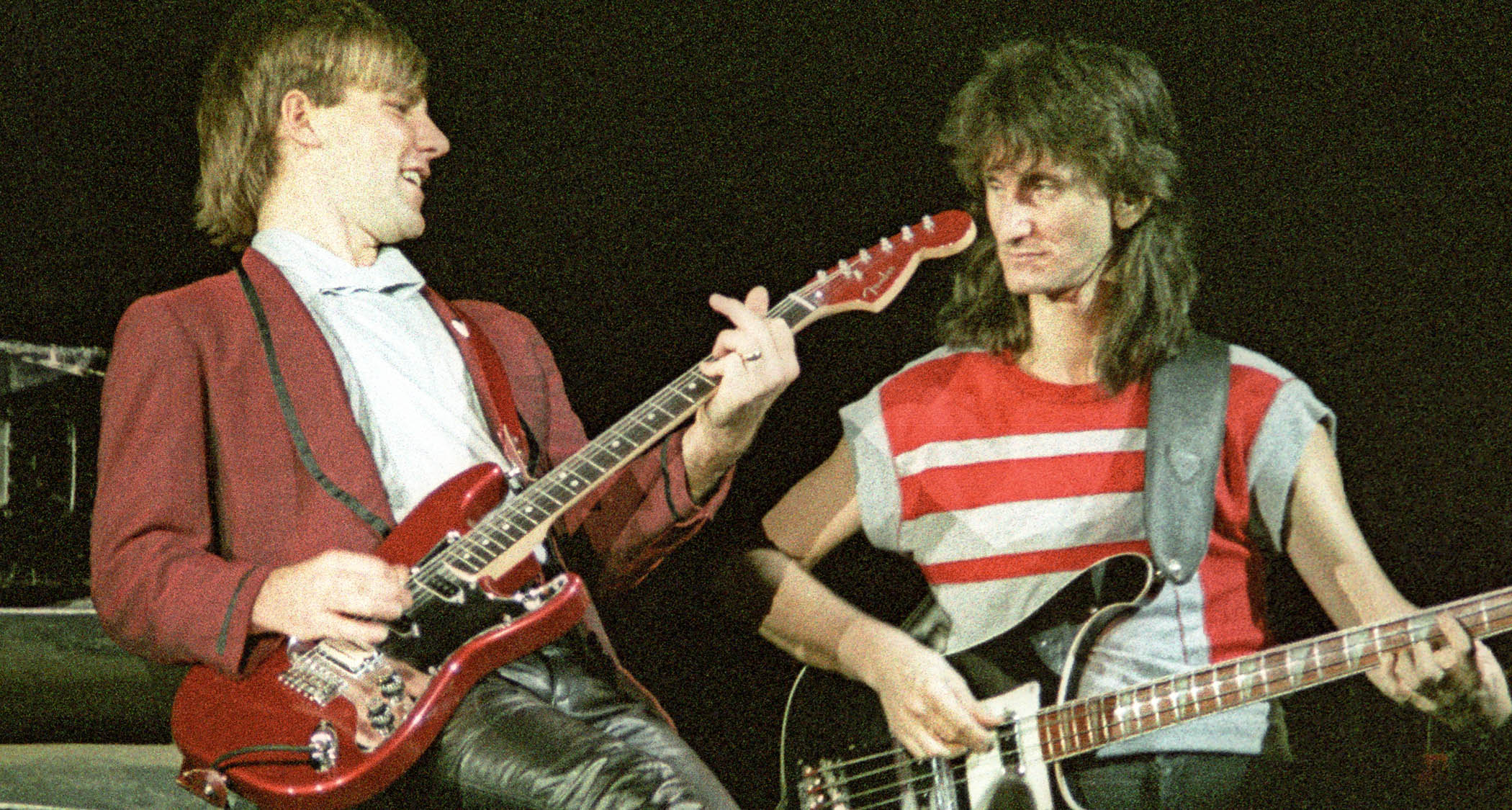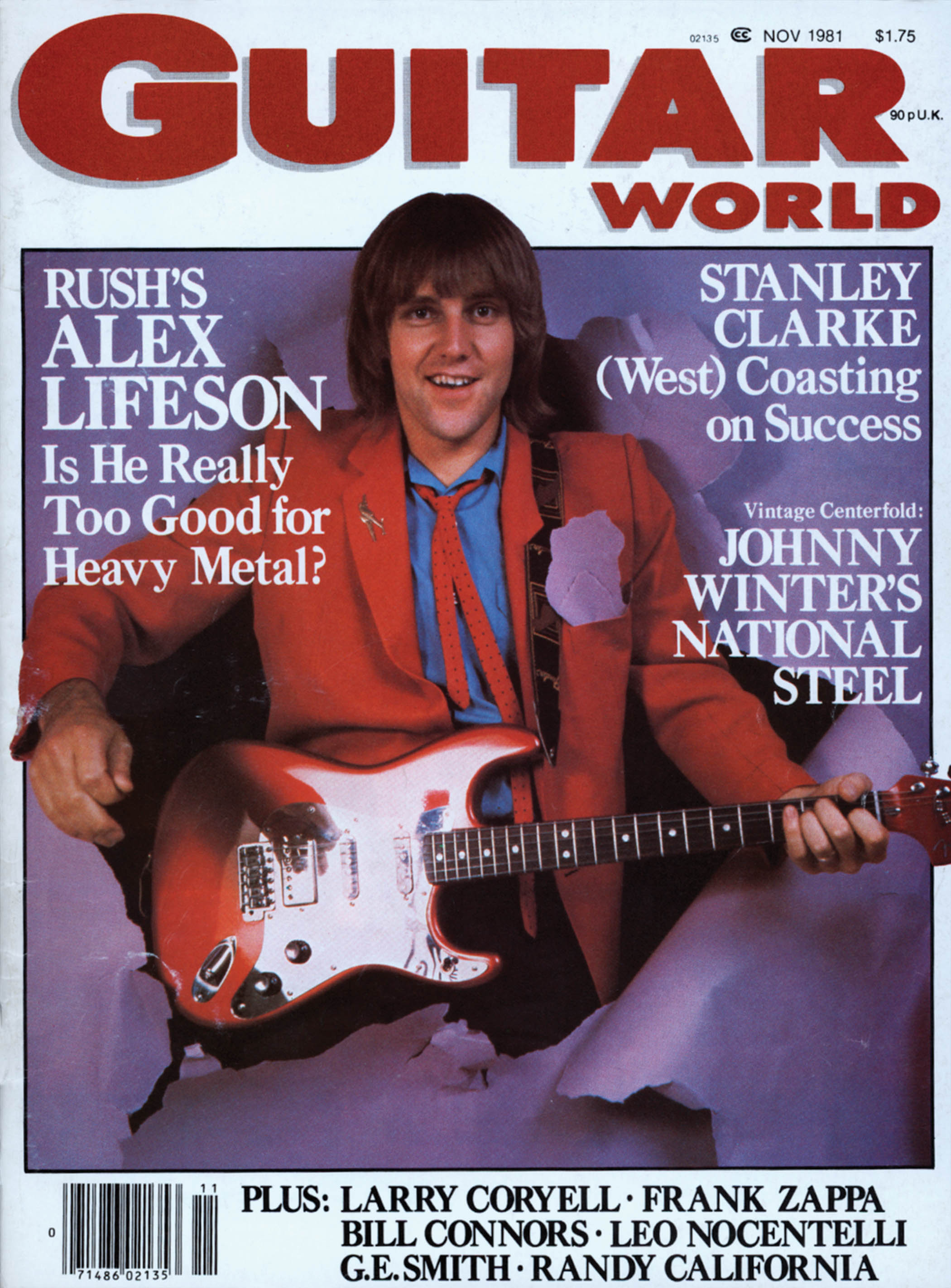
The Hentor Sportscaster made an unlikely comeback when Alex Lifeson announced that his own gear brand, Lerxst, had reanimated it as the Limelight and was making them in partnership with Godin. But what became of the original Sportscasters, like that fire engine red model that Lifeson was cradling on the cover of Guitar World’s November 1981 issue?
Truth be told, it’s a little bit of a sorry tale. But as Lifeson tells us, in this interview to commemorate 70 years of the Strat, the Hentor Sportscaster did more than enough to etch its way into the annals of rock history. With a different electric guitar, the solo to Limelight would just not have been the same…
How and where did you acquire this Strat?
“The story begins in 1978 when I modified a Fender Stratocaster that I purchased new. I replaced the bridge single coil [pickup] with a Gibson humbucker, reversed the input jack for easier access and added a Floyd Rose tremolo to replace the Fender tremolo. I used this guitar as a spare primarily and started using it increasingly for the Floyd Rose.
“It was renamed ‘the Hentor Porkflapsocaster.’ Shortly after, I commissioned Veneman Music to build a replica incorporating a shark neck, Floyd Rose and Bill Lawrence L500 pickup. This was the Hentor Sportscaster. This became the model for the Lerxst Limelight [Lifeson’s new signature guitar with Godin].”
What initially led you to choose this Strat over the semi-hollowbodied Gibson guitars you’d been playing with Rush?
“Although I was known primarily as a Gibson player, I did own several Fenders and liked the difference. I owned a 1956 Strat in 1973 as a backup to the [Gibson] ES-335. It made me think and play differently. I was becoming more enamored with the use of the tremolo bar, and the Floyd Rose made that very effective – and it sounded great.”
Did you use this Strat on any notable recordings?
“From [Rush’s] Moving Pictures on, I used the Hentor on a lot of recordings and particularly liked it for soloing. One standout recording is the solo from Limelight. It was the perfect selection to create the soulful, elastic and unstable character for the solo of that song.”
What made this Strat special beyond the modifications?
“The neck was bare wood, so I felt an immediate connection to that neck. I stripped a [Fender] Tele neck a few years later, and that guitar became my go-to for writing. I must have used that guitar for writing 75 percent of Rush’s material.”
Why did you choose this Strat for your 1981 GW cover shoot?
“I used the third Hentor [overall] and the second one built by Veneman Music for that shoot to match my red jacket and tie. I was so fashion-conscious!”

Do you still own this guitar? If not, what happened to it?
“No, I think I gave it to a tennis pro friend years ago. That was a mistake, as he’s left-handed! The Hentor Sportscaster was sold at auction two years ago, and the original black Hentor is in a museum in Ottawa, Canada. They’re gone now, but their spirit lives on in the Lerxst guitar series. Those are faithful replicas of the originals.”







